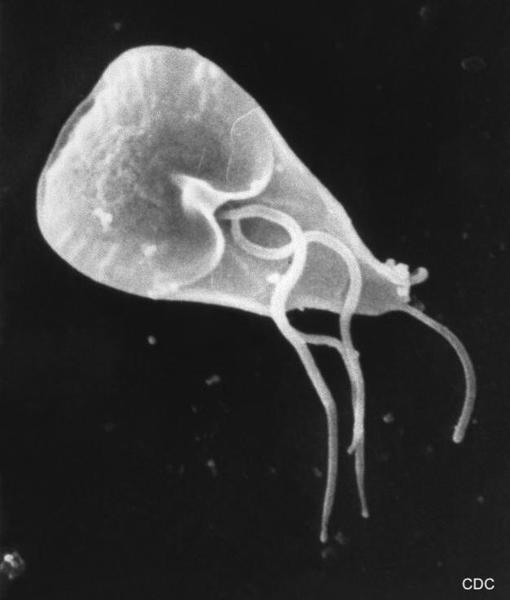Dublin Core
Title
Description
As snow melts and flows into Salt Lake Valley’s water system, it passes grazing animals, collecting parasites and germs like giardia. How do sanitation plants ensure entire cities don’t get sick? It all started in the early 1900s, as Utah’s cities on the Wasatch Front became more urbanized, abdominal diseases were avoided with the introduction of chlorine to our water. But chlorine faced public scrutiny from across the state -- and even the local pickle company.
Early residents of Utah were familiar with the occasional stomach upset, sometimes even dying from it and summing up the symptoms under the general umbrella term “dysentery.” But scientific research in the 1920s using microscopes found that stomach illnesses were actually caused by microscopic critters found in our water. Among the worst of them was giardia, a parasite easily killed by chlorine. Salt Lake City was one of the first places in Utah to use this new sanitizing technology. Local water officials ordered tanks full of chlorine gas by telegraph and installed them at Parley’s Canyon reservoir and the 1300 South conduit. The city health officer reassured residents that the the chlorinated water was still “as pure as it is possible to make it,” using only three-fourths of a pound of chlorine for each million gallons of water.
But people still had their doubts. One of the biggest opponents of chlorine was the Utah Pickle Company, which discovered its pickles had trouble pickling with chlorinated water. The Salt Lake Telegram reported in 1930 that “Chlorine Water Halts Bootleggers But It Also Annoys Pickle Makers,” showing that any fermentation process was halted by the powers of chlorination. The Utah Pickle Company eventually switched to well water, but even up until the late 1960s, citizens across Utah presumed a connection between chlorine and dying fish, nausea, and depleted vitamins. This led to sanitary engineers and health officials assuring locals of chlorine’s effectiveness in stopping the horrible disease of giardia and other bacteria. After all, it was a small price to pay to eliminate “dysentery” from our everyday talk.Creator
Source
_______________
See “Sanitary Engineer Says Chlorination of Water not Harmful,” Washington County News, August 22, 1935; “Salt Lake Uses Water That's Pure,” Salt Lake Herald-Republican, September 18, 1916; “Will Purify Water by Use of Chlorine,” Salt Lake Tribune, July 20, 1916; “Does Your Drinking Water Smell like Chlorine? Then Add More Chlorine, Says Scientist,” Salt Lake Telegram, December 28, 1940; “Science Upsets Everything the Doctors Believe about Germ Diseases,” Salt Lake Tribune, June 1, 1919; “Letters to the Editor,” Manti Messenger, April 27, 1967; “Letters to the Editor,” Salt Lake Telegram, October 19, 1924; “Pickles Refuse to Pickle in Chlorine,” Salt Lake Telegram, December 21, 1923; “Chlorine Water Halts Bootleggers but it Also Annoys Pickle Makers,” Salt Lake Telegram, April 3, 1940; Joyce E. Cutler, “Ignore Giardia Now, Make a Run for it Later: Water Parasite Attacks Man and Beast with Equal Fervor,” Deseret News, Jul 10, 1988; Amy Joi O’Donoghue, “State issues boil advisory for south Duchesne due to giardia fear,” Deseret News, November 8, 2019.

